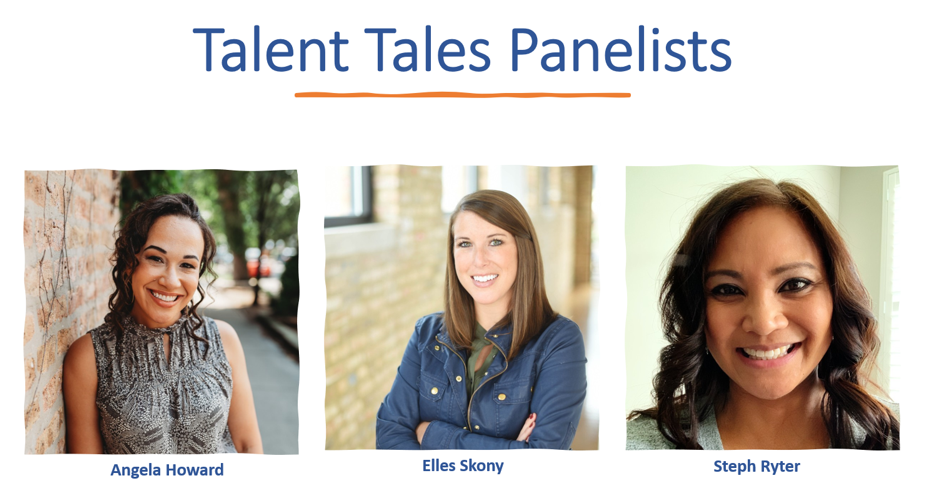In this episode of "Talent Tales", talentimperative.com founder Nicole Dessain brings back three former Talent Tales guests (Angela Howard, Elles Skony, and Steph Ryter) to discuss “Design Thinking for HR in 2022 - Predictions, Practices, and Pitfalls”.
PRACTICES
Panelists shared how they have applied design thinking in various ways as the world continues to navigate the pandemic. Steph and her team at Arity are using the virtual design thinking tool MURAL to engage employees in co-creating a remote work experience, including the re-design of their in-office new hire onboarding into a virtual program. Angela and her team at Dober re-launched their leadership development program which was scheduled to be delivered in person. It took a lot of intention to re-design the curriculum to be delivered virtually. The positive side effect of the re-design was providing a stronger community building experience to connect leaders across countries. Another area that Angela focused on was to experiment with various employee listening methods, including skill building with leaders on how to ask impactful questions. Elles echoed that “intention” has become her word of the last two years. This includes being intentional about the tools HR is using and about communication with employees.
The panelists also had some thoughtful insights on how to get started with design thinking in HR. Steph started by using elements of the method such as gaining empathy through collecting employee feedback, so they feel heard. Many of the products that Steph’s team built are based on the input from employees. This is how their monthly Friday Learn Day was conceptualized. Angela added that it’s about understanding your audience and thinking of everybody as a stakeholder and taking the time to break down the human experience of the people you are working with. She also highlighted the importance of layering in the dimension of diversity and inclusion into the process and ensuring we have the right perspectives in the room. Elles has created a spreadsheet that maps out each step in the employee experience and she uses it to align the HR team around it and use it to prioritize their activities.
PITFALLS
Let’s get real! Angela shared how she constantly seeks to refine how she engages Executive stakeholders, especially in striking the right balance between education and advising. As an HR leader, it’s important to get this group on board because they can either create barriers or support you. Steph built on this thread of leadership stakeholder engagement by asking: “How might we become more than just an agenda item?” Key is to build a relationship where leaders become partners on the journey.
But design thinking can’t cure all that ails us in HR. It’s critical to know when and when not to use design thinking to solve problems in HR.
PREDICTIONS
This is where things got rebellious! Nicole asked each of the panelists to react to the following industry analyst predictions around design thinking for HR in 2022: Gartner names organizational design/change management and the future of work as two of the top 5 priorities for HR in 2022. And Josh Bersin states in his HR Predictions for 2022 that “among all the changes coming in 2022 and beyond, the biggest of all is that HR itself is now a design profession in which every HR professional is being asked to consult, design, listen, and adapt.”
We highly recommend you listen to our panelists’ responses because some of them may come as a surprise…
Want to find out what our panelists predict for design thinking in HR in 2022 and beyond? Watch the entire interview on YouTube or listen to the Podcast.


